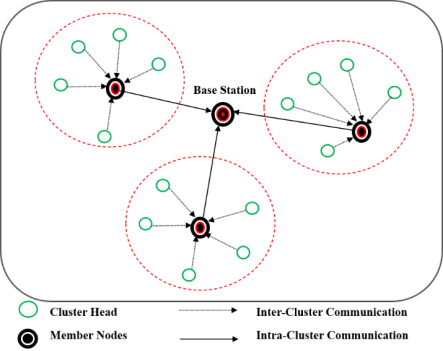Mathematically Engineered Adams Optimizer for Energy Efficient and Optimal Routing Approach for the Wireless Sensor Network
DOI:
https://doi.org/10.17762/ijcnis.v15i3.6244Keywords:
Optimization, Sensor Node, Deep Learning, Pareto, Adams, PDR, Wireless Sensor Network, Energy Consumption, RoutingAbstract
Wireless Sensor Network (WSN) comprises numerous Sensor Nodes (SN) scattered across a network to observe the atmospheric condition where the SN is the minimum cost. Vast usage of energy during data transmission is the primary design issue in WSNs that can be addressed by routing and clustering techniques. WSN has diverse transmission paths with unstable nodes, where the energy consumption is high, and the Quality of Service (QoS) is affected. The high data transmission delay and inefficient throughput indicate the ineffectiveness of WSN. To overcome this issue, this research concentrates on energy-efficient optimal routing formulated with the assistance of a mathematical approach and Adams optimizer. The mathematics’ based Pareto optimization is utilized to optimize the Adam Moment Estimation (Adam) that trains Deep Learning (DL) network that is deployed in both heterogeneous and homogeneous networks. The learning process is enhanced with the support of Pareto optimization, and the multi-objective problem is efficiently handled. In this context, Pareto optimization balances the path construction, and the equitable distribution issue is rectified by the Adams-based DL network. The proposed Pareto-integrated Adams Optimizer for Energy Efficient Routing (PAOEER) sustains the WSN performance by enhancing network parameters. The PAOEER achieves a higher Packet Delivery Ratio (PDR) of 97.18% and minimal Energy Consumption (EC) of 112.34 J. The simulation analysis shows that the proposed PAOEER is effective and outperforms the existing state-of-the-art techniques, indicating PAOEER is a promising alternative.
Downloads
Published
How to Cite
Issue
Section
License
Copyright (c) 2023 International Journal of Communication Networks and Information Security (IJCNIS)

This work is licensed under a Creative Commons Attribution-NonCommercial-ShareAlike 4.0 International License.





